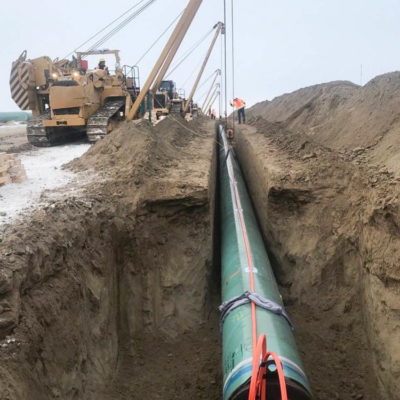Good afternoon fellow readers. It brings me great pleasure to announce that the month of January 2020 has now come to an official end. Feel free to stand up and applaud as the longest and worst month of the past decade has come to a merciful close. And in celebration of that august occasion, I am taking this moment to turn over a new leaf, to put on my relentlessly positive hat (yes, I have one) and engage in a blog that will be filled with nothing but good news. Okay, it won’t be nothing but, but it will be a majority. Right, even that is a lie. This blog will contain some good news and some bad news. It is up to you to differentiate betwixt the two.
In the first bit of good news, I realize now that my missives are simply too long, so I am going to make a concerted effort to keep the length down to a more manageable level. How will I do that you ask? Simple – stop covering multiple subjects in excruciating detail, save the “special” sections for stand-alone articles (bonus – more articles!) and lastly by making my introductory paragraphs less wordy and not so filled with vacuous nonsense. That last bit may not be entirely possible – no one’s perfect.
Winner Winner Chicken Dinner
So, was anyone paying attention on Sunday? I was. What a game. Kansas City beat the 49ers by 11 points after a stirring six minute explosion of scoring that sucked the air out of a San Francisco team that was on cruise control for the better part of three and a half quarters before inexplicably becoming some twitchy and less talented version of the Cincinnati Bengals.
End result? My prediction was right.
Do you want to know what other predictions I had that were right? Pipelines. Yup. That’s right. Pipelines.
The last week (and month), it must be said, has been a bellwether for the pipeline file in Canada and a bonafide shot in the arm for the Alberta energy industry as two major pipeline initiatives were able to overcome significant hurdles to completion and a third stealthily moves along.
Let’s take a look at what happened.
Enbridge Line 3 Replacement Project
Background
The Line 3 replacement project would see Enbridge replace an ageing pipeline that runs from Alberta to a refinery complex in Superior, Wisconsin and points thereafter. The pipeline needs replacing because it is old, prone to leaks and corrosion and is thus operating at half-capacity out of well-founded fears it could give way. Nasty stuff. So, Enbridge, being a prudent pipeline operator said “Hey regulator, this thing’s gonna blow, how about I replace it with something new, tubular and shiny, that maybe takes a better and more efficient route and will allow us to also ship more oil to those refineries of yours from Canada.”
As we all know, the pipeline was indeed approved, by governments and regulators on both sides of the border – federal, state and provincial and all was well until it hit a bit of a snag. And that snag was the new duly elected Democratic government in Minnesota which has sought to delay and consternate the construction of this particular pipeline across its state using all of the proverbial tools in the tool box, with the ultimate tool being a review before the Minnesota Public Utilities Commission on the continued applicability of the Environmental Certificate issued for the pipeline and things like permitting, licensing and first nations consultation (sound familiar?).
What all of this rigmarole meant is that the completion date for the project has had to be pushed out from end of 2019 to end of 2020, forcing Alberta to experience another year of egress pain and curtailment, and the target refineries to source their oil (likely at a higher price) from elsewhere.
What Happened
Well earlier this week the Public Utilities Commission voted 3-1 that the environmental certificate already issued with respect to this project was valid and that construction could proceed. Accordingly, Enbridge can proceed with gathering all the required permits from the state to complete that portion of the project it needs done to activate the pipeline towards this time next year. It should be noted of course that the portions of this project that reside in Canada, Wisconsin and North Dakota were completed on time and are in fact in service.
TransMountain Expansion
Background
How much do you want? The TransMountain Expansion, or the Pierre Elliott Trudeau Memorial Pipeline, is the twinning of an existing 4,000 year old aqueduct that runs from Edmonton, Alberta through the Rockies to a terminal in Burnaby, British Columbia. From there, refined and unrefined product is packaged and shipped to various and sundry users including Lower Mainland motorists, airports for jet fuel, Washington State and, on occasion, China and Los Angeles by tanker.
The capacity of the existing pipeline is 300,000 bopd and the expansion will increase this to 890,000 bopd, which is no laughing matter.
Most know the saga (although I did see an article in the Herald the other day that messed up the timeline) but for fun, let’s recap.
The original proponent submitted their initial application in 2013 and it was approved by the NEB in 2016, shortly after the Northern Gateway project was shelved and at the same time as the Canadian portion of Line 3 was approved. This approval was based on the NEB recommendation which included 157 conditions and extensive touchy-feely consultation with affected First Nations by the federal government and announced with tremendous fanfare including a massive investment in Marine Spill Response.
By 2018 however, a pipeline-hostile NDP-Green coalition was in power in British Columbia and they were doing everything they could think of to thwart the project and had launched a number of appeals against the pipeline’s approval alleging, among other things, that the Federal government had failed in its duty to consult First Nations (who in fact actually wanted a veto) and that they failed to adequately take into account the impact of a spill and/or tankers on Southern Resident Killer Whales.
The pressure of these appeals and the constant animosity and obstructionism by the BC and some regional governments eventually proved too much for the proponent (Kinder Morgan) such that they in essence told the Federal government “fix this or we’re out”. Never one to miss a chance at a dramatic gesture, the Federal government elected to purchase the existing pipeline and the expansion project from the proponent in order to complete it themselves. So there.
The rest of course will be sung about by Canadian minstrels for eons as, no sooner had the cheque cleared for the purchase than the Federal Court of Appeal (FCA) issued its momentous ruling that the Federal Government had failed in its duty to consult and should have done a better job considering the effects on whales. Oopsie poopsie!
Never one to regret having egg on their faces, the Feds scrambled to rectify the situation and redid the assessment and consultation process, this time with more experts and genuinely serious people so that they could fulfill their constitutional duty.
Keeping up?
Finally in September of 2019 the Trudeau Cabinet approved, for a second time, the TransMountain Expansion Project. Which was of course immediately appealed, for not doing adequate consultation (wait, wasn’t Groundhog Day last week?).
What Happened
Well as it turns out, those appeals were heard by the Federal Court of Appeal and a decision was just released. But before I talk about that, let’s revisit the BC Government and their efforts. You see they went all the way to the Supreme Court in the hopes of being able to claim a constitution-denying ability to regulate what can be shipped through a federally-regulated pipeline and were, to put it mildly, asked to leave.
Alright, back to the TransMountain Appeals. The Federal Court of Appeals ruled on Tuesday this week and dismissed all the appeals, saying in essence that the Federal government learned their lesson and did in fact execute their duty to consult in a meaningful and effective way and that the duty to consult does not mean a duty to achieve unanimity. The FCA further said that anything along the lines of unanimity conferred on the petitioners a de facto veto which they do no, in fact, have. The judges also went on to discuss instances where the federal government and proponent sought to accommodate requests and were met by shifting goalposts, avoidance and obstruction, leading them to the conclusion that some parties were never intending to agree and just wanted the project scrapped – big surprise.
Upshot of this? The duty to consult was met. First Nations do not have an implied veto when that duty is met. The process worked and the project is free to move forward as planed for completion in 2022.
While the true victory for pipeline proponents will be when the first barrels flow down the line, this is, as they say, good news.
What’s Next?
Construction. And maybe, just maybe, some form of offer on the project from the private sector. It may be too soon, but many will see this as an opportunity to relieve the federal government of an asset it wishes it never had to buy, as well as a way to introduce some First Nations ownership into large infrastructure assets. We can dream right?
Keystone XL
Background
Keystone XL, an 890,000 bopd pipeline designed to ship oil from Alberta to Steele City, Nebraska where it would meet up with its southern leg (completed six years ago) has been on the books the longest of any of the major Canadian pipeline projects and has had, to put it mildly, the hardest go.
Not on the Canadian side mind you. The KXL Pipeline was approved by the Harper government in 2010 and was ready to rock until it was sacrificed on the altar of environmental special interests by, of course, Barack Obama (you thought I was going to say Trudeau didn’t you?). At any rate, KXL had received State Department approval (needed to cross an international border) and got squashed anyway, leading to its proponent to start planning the dubious and politically toxic Energy East alternative. However, upon the election of the environmentally dubious and pipeline-friendly Donald Trump, the KXL project was re-approved, receiving its Presidential Permit and TC Energy started planning again to build the KXL (note that this was three years ago). As expected, the newly minted Trudeau government gladly indicated it still approved of the Canadian portion of this project as well and Energy East was mercifully abandoned to concentrate on a project that made both political and economic sense.
Unfortunately, the US legal regulatory system is as much of a complicated morass of inter-twined state, federal and civil rights as Canada, so the actual permitting and planning of the project has been exceptionally challenging. This ranges from the re-routing of the project through Nebraska to the recently resolved stalemate in Montana where a Federal Circuit Court judge had suspended TC Energy’s ability to do pre-construction work, costing TC Energy another construction season while all the while the State Department updated its environmental certificate and conducted, you guessed it, more consultation.
What Happened
Recently, the Trump administration has re-issued its permit for the construction of Keystone XL (I would imagine Trump thinks it’s already built) and there are signs of movement on the project.
The new route through Nebraska has been approved and the updated State Department study is expected within months, including an assessment of the new Nebraska routing. More recently, the US Federal Government gave the green light to TC Energy building a critical section of pipeline that crosses the US-Canada border and the company itself has re-initiated pre-construction work in Canada, North Dakota and Montana.
While the project is projected to be complete by 2022, the reality is that TC Energy has managed to miss pretty much every construction season of the Trump administration, has not issued a Final Investment Decision and now finds itself a potential US election pinata for the second time – hoping for a Donald Trump re-election miracle to finally get down to business. Failing that, at the very least a slate of candidates who aren’t virulently opposed to fossil fuels and their transportation will do. While it is unlikely that KXL will be an election issue, it’s what happens after that matters.
What do all these projects have in common?
Well first of all, they have all been approved in Canada and, in some cases, the Canadian part is already built.
All these projects have been subject to some of the most rigorous environmental reviews known to humanity.
All are seen as critical to the Western Canadian oil industry in general and the Alberta economy in particular.
Each one has faced its own particular set of challenges and still does but ultimately, even with all the headwinds and flailing on the margins, it is somewhat reassuring that with support from the appropriate parties and a sound economic case supported by the rule of law, it appears each can advance on its own merits.
While I am hopeful that all three projects are going to be completed, I only have 100% confidence in one – the TransMountain Expansion, because that one is under Canadian control.
And in the world of pipeline politics, that’s worthy of a “Really? Go figure…”
Teck in the News
You may have heard a lot about the giant $20 billion Teck Oilsands Project that has been in the planning stages for ten years and has been approved by a joint provincial/federal panel and is now awaiting Federal Cabinet approval. If you haven’t, you haven’t been listening.
At any rate, this massive oilsands mining project, conceived when oil prices were on fire and investment in the oilsands was manic in a Permian kind of way, has become, like everything else energy related it seems, a flashpoint in the Alberta vs Federal government (i.e. hated Trudeau Liberal Laurentian Elite) battle.
On the one hand, the project is seen as potential economic boon the province of Alberta, a $20 billion investment creating 7000 jobs at a time when upstream investment is, well, not really there. It also has the support of all the locally affected First Nations who want to participate in the economic activity that surrounds the project.
On the other hand, the emissions profile of this project is hardly consistent with the Trudeau Liberals net-neutral emissions goals and the timing for this is seen as an important test for Trudeau on the environmental file. Neither side seems particularly interested in any form of compromise and no matter what the decision is, there will be blood.
Here’s my take. The approval would be a symbolic win for Kenney but also a bit of a shot in the arm for the province of Alberta. This should be an easy give for the Federal Government because the likelihood of this project ever actually proceeding is slim to none at current price levels. To be economic, the Teck project would need sustained heavy oil prices in excess of $60, if not $70. This is not on anyone’s forward price deck. In addition, the reality in the oilsands right now is that there are close to twenty projects that have been approved that have yet to start work that are wating for this very same pricing environment. This would make that one more. Assurances from the company aside, that is just the economic reality for major projects.
There is now a rumour that the Federal government is thinking of announcing a bunch of economic baubles for Alberta to take the sting out of not approving this project. That would be a colossal mistake. The major fuel of the Western alienation that is feeding #wexit is the perceived lack of a “fair deal” from Ottawa but the kindling is Ottawa’s ability to approve or deny major energy projects such as the Teck oilsands mine. For the Trudeau government to deny this project given its likelihood of proceeding is just sheer madness. If you must, figure out what concession you need from the Alberta government and Teck to satisfy your base and move on.
Conditions are understandable given changed circumstances – new government in Alberta with a changed environmental plan, emissions caps, being sued over a carbon tax – whatever.
Cancellation because you are afraid of the NDP and need to pander to Quebec at the expense of Alberta just reinforces every negative stereotype the West has of Ottawa, the Liberal Party and Trudeau. Oh, and not to Trudeau, cancellation actually gives Jason Kenney a much bigger win than approval does because it strengthens the alienation hand and the animosity towards the Federal government.
So let’s review:
Option 1 – Slap some additional conditions on and approve a major energy project that has a very slim chance of ever being built but is symbolic to Albertan’s desperate for good news. Will give Alberta a win, isn’t going to increase emissions past the cap even on the outside chance it goes forward and will be seen as the Liberals finally working with the West.
Option 2 – Be a self-righteous d***, ignore the regulatory process, don’t approve the project, get some fleeting brownie points from a cohort that didn’t support you anyway and pour lighter fuel on a legacy-killing #wexit movement and give Jason Kenney and the next conservative leader (TBD) a cudgel he can hammer you with until the next federal election and beyond.
Easy-peasy, lemon squeezy.
Those are my thoughts for the day.
Prices as at February 7, 2020
- Oil prices continue downward on pressure from coronavirus news; WCS gap at $18;
- Oil storage increased
- Production fell slightly
- Natural gas storage above last year; above 5-year avg
- WTI Crude: $50.42 ($51.61)
- Western Canada Select: $31.92 ($30.91)
- AECO Spot: $2.00 ($2.28)
- NYMEX Gas: $1.856 ($1.850)
- US/Canadian Dollar: $75.18 ($0.7557)
Highlights
- As at February 1, 2020, US crude oil supplies were at 435.0 million barrels, an increase of 3.3 million barrels from the previous week and a decrease of 12.2 million barrels from last year.
- The number of days oil supply in storage is 26.5 which is comparable to last year at this time.
- Production was down marginally for the week at 12.900 million barrels per day. Production last year at the same time was 11.900 million barrels per day.
- Imports increased to 6.615 million barrels from 6. 660 million barrels per day compared to 7.146 million barrels per day last year.
- Crude exports from the US decreased to 3.413 million barrels per day from 3.509 million barrels per day last week compared to 2.870 million barrels per day a year ago
- Canadian exports to the US decreased to 3.825 million barrels a day from 3.845 million barrels per day last week
- Refinery inputs increased during the week to 15.972 million barrels per day
- As at February 1, 2020, US natural gas in storage was 2,609 billion cubic feet (Bcf), which is 199 BcF above the the 5-year average and about 31% higher than last year’s level, following an implied net withdrawal of 137 Bcf during the report week
- Overall U.S. natural gas consumption grew by 2% during the report week.
- Production was essentially flat for the week. Imports from Canada increased 5% from the week before. Exports to Mexico decreased 4% week over week.
- LNG exports totaled 62 Bcf
- As of January 31, 2020, the onshore Canadian rig count increased 10 to 256 (AB – 167; BC – 19; SK – 67; MB – 3; Other – 0). Rig count for the same period last year was 238.
- US Onshore Oil rig count at January 24, 2020 is at 675, down 1 from the week prior.
- Peak rig count was October 10, 2014 at 1,609
- Natural gas rigs drilling in the United States is down 1 at 111.
- Peak rig count before the downturn was November 11, 2014 at 356 (note the actual peak gas rig count was 1,606 on August 29, 2008)
- Offshore rig count increased 2 to 23.
- Offshore peak rig count at January 1, 2015 was 55
US split of Oil vs Gas rigs is 85%/15%, in Canada the split is 65%/35%
Trump Watch: Celebrating Impeachment Acquittal in about as bizarre a fashion as imagineable.
Kenney Watch (new!): Mr. Kenney goes to Washington, says “Teck oilsands rejection would be devastating for investment”.
Trudeau Watch (for balance): re: CBC – Launching Charm campaign in Africa – UN Sec. Council seat? Still has a beard.









